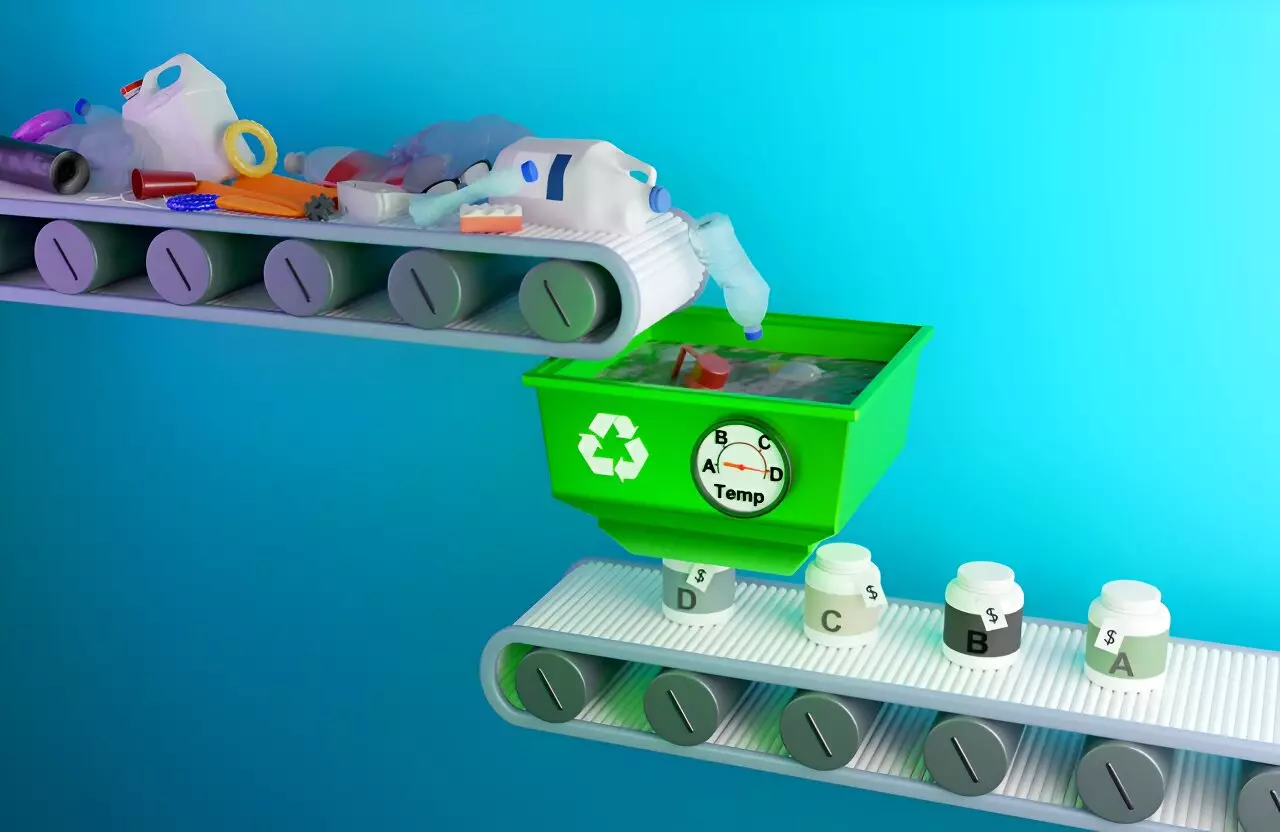Plastic waste has become a growing concern worldwide, with the majority of consumer plastics ending up in landfills or incinerated. Traditional methods of recycling mixed plastics have proven to be expensive and inefficient, resulting in a significant amount of plastic waste being improperly disposed of. However, a team of scientists at the Department of Energy’s Oak Ridge National Laboratory has made a significant breakthrough in plastic recycling with the development of a new catalytic recycling process.
The researchers at Oak Ridge National Laboratory utilized chemical design, neutron scattering, and high-performance computing to create a new multipurpose catalyst. This catalyst has the ability to selectively deconstruct multiple polymers found in mixed plastics, turning them into pristine monomers. These monomers can then be used to produce commercial-grade plastics and other valuable materials, closing the loop on plastic recycling.
Compared to using individual catalysts for each type of plastic, the new multipurpose catalyst offers several significant advantages. It can generate up to 95% fewer greenhouse gases, require up to 94% less energy input, and result in up to a 96% reduction in fossil fuel consumption. These environmental benefits make the new catalyst a promising solution to combatting global plastic waste.
The newly developed organocatalyst has demonstrated its efficiency and speed in deconstructing multiple polymers. In just around two hours, it can break down polymers commonly found in safety goggles, foams, water bottles, and ropes. This range of effectiveness is a major breakthrough since no single catalyst has been able to effectively deconstruct all four of these polymers before.
The new catalytic recycling process provides numerous environmental advantages. It eliminates the need for harsh chemicals in the deconstruction of polymers and offers good selectivity, thermal stability, nonvolatility, and low flammability. Additionally, it can effectively deconstruct multicomponent plastics, such as composites and multilayer packaging, further reducing plastic waste.
To confirm the formation of deconstructed monomers from waste plastics, the scientists utilized small-angle neutron scattering at Oak Ridge National Laboratory’s Spallation Neutron Source. This method allowed them to characterize the structure of the deconstructed polymers at different levels of detail. By utilizing different temperatures, the researchers were able to sequentially recover individual monomers separately, in a reusable form.
The development of this new catalytic recycling process marks a significant step forward in the future of plastic recycling. By replacing first-use monomers with recycled monomers, the process has the potential to reduce annual energy consumption by billions of barrels of oil. Implementing this closed-loop recycling globally could make a considerable impact on plastic waste and the environmental damage it causes.
The researchers at Oak Ridge National Laboratory are continuing to refine and optimize the catalytic recycling process. They are exploring ways to further enhance the efficiency of the organocatalyst and expand its capabilities to deconstruct even more types of polymers. With further advancements and adoption of this technology, the future of plastic recycling looks promising.
The breakthrough in plastic recycling would not have been possible without the collaboration between scientists, engineers, and researchers at the Department of Energy’s Oak Ridge National Laboratory. By combining their expertise in chemical design, neutron scattering, and high-performance computing, they were able to develop a groundbreaking solution to address the challenges of plastic waste.
The development of a new catalytic recycling process offers hope for the future of plastic recycling. With its ability to efficiently deconstruct multiple polymers and reduce energy consumption and greenhouse gas emissions, this breakthrough has the potential to revolutionize the way we handle plastic waste. As further advancements are made and the technology is adopted on a global scale, we can work towards a more sustainable and environmentally friendly future.


Leave a Reply